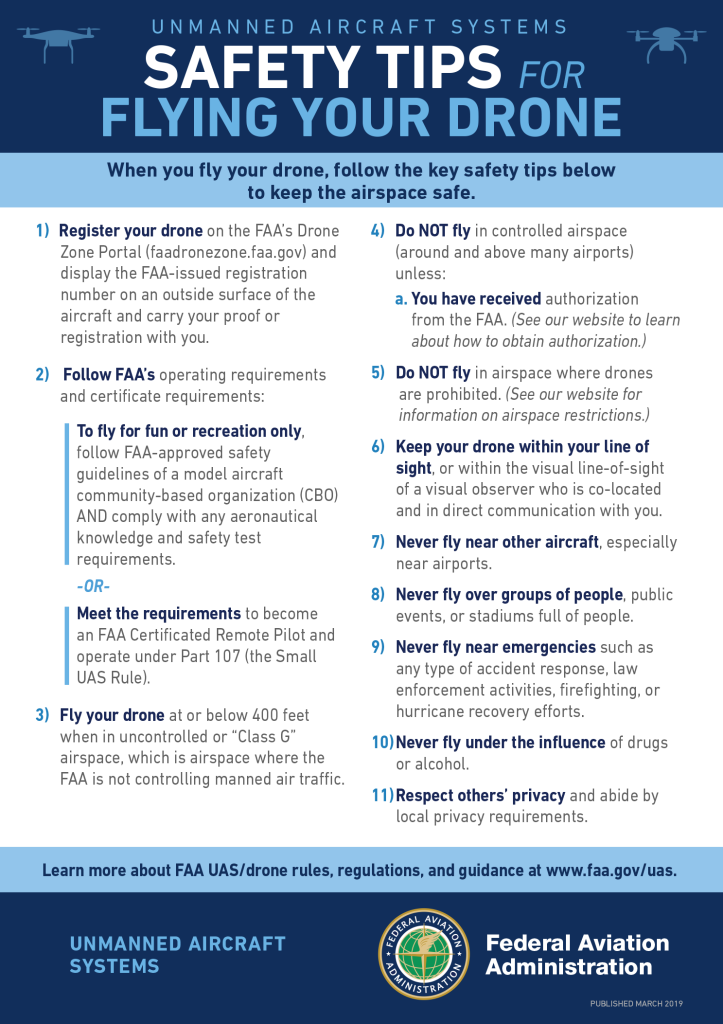Safety on a jobsite applies not only to the ground and structure being built, but to the air surrounding the jobsite too. With technology advancing rapidly, drones are becoming a commonly used tool for construction management teams. Whether documenting the job via photo and video, or performing complex mapping to assist in construction, there are many ways drones can enhance a project.
What many people do not think about is the safety requirements that come with drone flights. When a drone is in the air, the pilot must consider not only aerial obstacles, but what is going on below the drone while it is in flight.
“To start, any pilot flying commercially must have a commercial drone license from the FAA. Testing and certification for this is very strict and is done at an FAA testing center,” said Jones.
For most drone flights, there is a large amount of planning and preparation must take place.
“Pretty much wherever you fly, you will need some type of approval. A typical approval is called LAANC (Low Altitude Authorization and Notification Capability), which provides pilots with access to airspace at or below 400 feet, along with awareness of where pilots can and cannot fly. This also lets air traffic professionals know where and when drones are operating. It is a quick way to get real time authorization to fly,” said Jones.

Depending on where you are flying, you may need to contact the closest air traffic control tower to confirm airspace availability. There is also an extensive process to get approval to fly near military and government buildings.
Once the flight is underway, the pilot must always have visibility of the drone and what is beneath it.
“You must have a visual observer if you are flying the drone where you cannot see it,” said Jones. “You cannot fly directly over people or vehicles, so knowing where your drone is and what is beneath it is always in consideration.”
Other best practices for a smooth and safe drone flight include trying to fly a jobsite around lunch time, when activity will be low. Also communicate with the project team, as they can plan with you for an ideal time to fly. Be sure to plan if you will need more than one visual observer.


